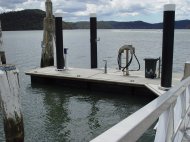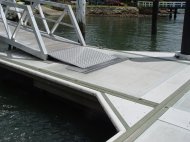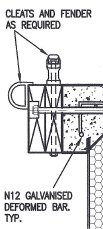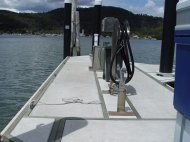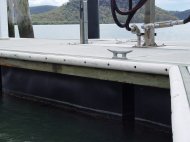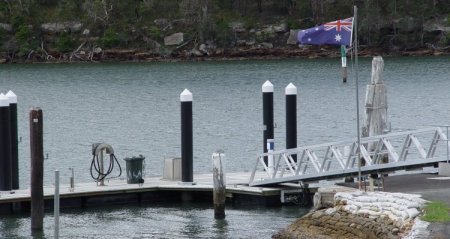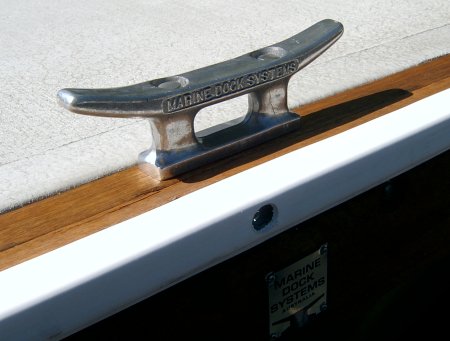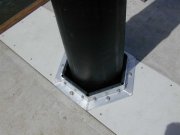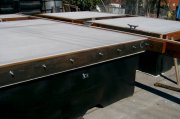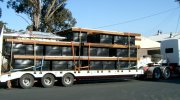|
|
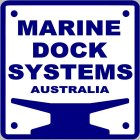
| |
MARINE DOCK SYSTEMS
45 Wellington Street Riverstone N.S.W 2765 Australia
Ph: +61 2 9627 5577
26 Corbould Rd Coolum Beach Qld 4573 Australia
Ph: +61 7 5324 1557
 Home Home
 Email Email
 Enquiry Enquiry  Links Links
| |
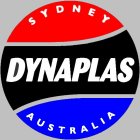
|
COMMERCIAL CONCRETE
Marine Dock Systems designs
Concrete Docking Systems and
Pontoons for a variety of applications.
 Floats
Floats
 Enquiry
Enquiry
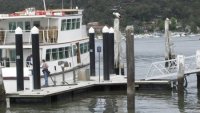
|
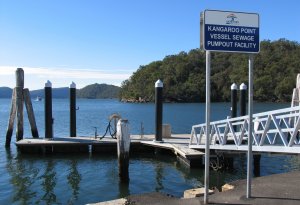
|
CLICK ON IMAGES FOR ENLARGEMENTS
 a4-2704 - Concrete pontoon 4.5 mtr x 2.5 mtr Swimming concept a4-2704 - Concrete pontoon 4.5 mtr x 2.5 mtr Swimming concept
 a4-2712 - Concrete Pontoon and Ramp Kanagaroo Point Arrangment a4-2712 - Concrete Pontoon and Ramp Kanagaroo Point Arrangment
 a4-2713 - Concrete Pontoon Kanagaroo Point Arrangment a4-2713 - Concrete Pontoon Kanagaroo Point Arrangment
 a4-2714 - Concrete Pontoon Kanagaroo Point Section a4-2714 - Concrete Pontoon Kanagaroo Point Section
 a4-2715 - Aluminium Ramp 12 mtrs x 1.2 wide Kanagaroo Point a4-2715 - Aluminium Ramp 12 mtrs x 1.2 wide Kanagaroo Point
 a4-2906 - Concrete Pontoon System Section a4-2906 - Concrete Pontoon System Section
 a4-2917 - Concrete Pontoon System 20 mtr x 2.6mtr City of Greater Geelong a4-2917 - Concrete Pontoon System 20 mtr x 2.6mtr City of Greater Geelong
 a4-2940 - Dangar Island Wharf Horsby Council Proposed Concept Pontoon a4-2940 - Dangar Island Wharf Horsby Council Proposed Concept Pontoon
 a4-2966 - Concrete Rowing Pontoon 10 mtrs x 2.4 a4-2966 - Concrete Rowing Pontoon 10 mtrs x 2.4
 a4-2973 - Gosford City Council Proposed Public Wharf Pontoon a4-2973 - Gosford City Council Proposed Public Wharf Pontoon
 a4-3213 - Bayveiw Concrete Pontoon 10 x 5 mtr a4-3213 - Bayveiw Concrete Pontoon 10 x 5 mtr
 a4-3230 - Concrete Pontoon System Layout 16m x 2 mtr a4-3230 - Concrete Pontoon System Layout 16m x 2 mtr
Concrete Pontoon System
The following information is provided to enable the appraisal of Marine Dock Systems (MDS) concrete pontoon system; also provided are comparisons with other pontoon systems on the market.
The key elements of the Marine Dock System concrete pontoon system are as fllows;
Flotation Modules
Flotation Modules are one piece, rotationally moulded. U.V. Stabilized,high stress-crack and impact resistant polyethylene. They provide long life, low maintenance flotation which is not attacked by osmosis nor other chemicals found in the marine invironment.
The flotation modules are provided with the additional security of a polystyrene core, producing a positively buoyant, unsinkable system.
Marine Dock System has pontoons and marinas in use now for over 30 years, with the flotation modules requiring no maintenance.
The advantage of rotationally moulded polyethylene is as follows:
a... The outside skin of the module is in one (1) piece. A Marine Dock System (MDS) rotationally moulded skin is seemless and does not rely on glue or plastic welding for sealing the skin against the ingress of water or structural integity.
A variety of systems "wrap" a polystyreen block of foam with polyethylene sheeting or film. All the seams are then plastic welded or glued. The inegrity of these skins is dependant on the quality of the welding and/or the adhesives.
b... The minimum wall thickness of the MDS polethylene skin is 5-6mm. The moulding process also allows the build up of the wall thickness in the corners of the module. This maximises the structural integrity, impact and abrasion resistance where it is required most.
Systems using the polyethylene "wrap" and welded method don't usually have a polyethylene wall thickness greater than 2-3mm. Some are are even as low as 0.5mm
Some systems use glued together, polystrene foam block, which are then sprayed with polyurethane, elastomeric covering. These systems also relying on minimal coverage and thickness(less tahn 2mm) for sealing the skin against the ingree of water or structural integrity. Quite offen, these skins can be damaged during transport. Marine organisms have also been known to damga and burrow through these sprayed on systems. The UV stability, stress-crack resistance and imact resistnce of these sprayed on systems is generally not as good as polyethylene.
Other systems on the market use full concrete encased polystyrene block. Most of these run a minimal concrete thickness all over. Usually the bottom and the walls are only about 25mm thick, with the decks only 30-50mm thick. Some of these systems use steel reinforced in the deck and the bottom only. Some even use it in the deck alone. Alot of these systems have problems transferring torsional loading hrough the pods. This results in the concrete pods cracking. Some cases have seen pods crack in half, ant the bottoms have fallen off.
Marine Dock System is confident that the impact resistance of its rotationally moulded polyethylene floats is far greater than many other pontoon systems on the market.
A sledge hammer demonstration can be performed at MDS Factory if required.
Decking
Decking is poured in place, galvinised reinforced, marine mix 50Mpa concrete with fibre-mesh additive. The structural decking will have a minimium deck thickness of 100mnm. Deck strength is also increased with a 200mm deep edge beam around the outer perimeter of the pod. Finish to the deck is a standard broom finish for non-slip. (other finishes available on request)
The NSW Department of Public Works and Services has approved the concrete mix on previous projects, for a design life in the marine environment 30+ years.
The advantage of MDS concrete decking is as follows
a... Deck thickness and top cover to reinforcement is greater than many other systems on the market. This results in greater strength with the ability to transfer greater lateral and vertical loading. The design life is olso increased with greater deck thickness and top cover.
Some systems have less than 50mm deck thickness nad less than 30mm of top cover to reinforcing. Such systems have an inreeased chance of cracking and failing, with the result that design life is significantly reduced.
Some competitors say that the thicker deck inreases the height of the centre of gravity of the pontoon, which in turn reduces the pontoon stability.
This is true however stability is only a concern with narrow rectangular pontoons. "L" shaped and "T" shaped pontoons have adequate stability by virtue of connections.
If a narrow rectangular pontoon is required, MDS can increase the stability of these pontoons with a solid ballast in the bottom of the polyethylene float. Stability will not be a concern with a MDS pontoon.
|
|

| |
MARINE DOCK SYSTEMS
45 Wellington Street Riverstone N.S.W 2765 Australia
Ph: +61 2 9627 5577
26 Corbould Rd Coolum Beach Qld 4573 Australia
Ph: +61 7 5324 1557
 Home Home
 Email Email
 Enquiry Enquiry  Links Links
| |

|
|
 Residential Pontoons
Residential Pontoons Ramps/Gangways
Ramps/Gangways Commercial Pontoons
Commercial Pontoons Pontoon Boats
Pontoon Boats House Boat Bases
House Boat Bases Boat Ramp Pontoons
Boat Ramp Pontoons Industrial Pontoons
Industrial Pontoons Oyster Cultivation
Oyster Cultivation Bridges/Walkways
Bridges/Walkways Installations
Installations Design and Concept
Design and Concept Floats
Floats Pile Caps
Pile Caps Timber & Decking
Timber & Decking Buffer
Buffer Cleats
Cleats Pontoon Furniture
Pontoon Furniture Brackets
Brackets Fasteners
Fasteners Price List
Price List  Drawing register
Drawing register Build your own
Build your own Parts Price List
Parts Price List  MDS Logo 1981
MDS Logo 1981


 Home
Home
 Email
Email
 Enquiry
Enquiry  Links
Links

 Floats
Floats

